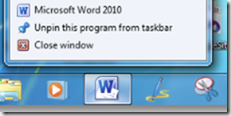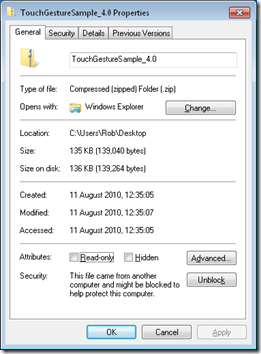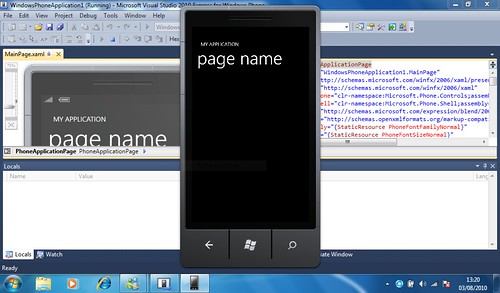
Some time back I got an Artigo PC to play with. This is a lovely little PC in a tiny box which will fit into the drive bay of a “proper” computer. It was supplied running Windows CE, which is a very nice operating system, but I wanted to do a bit more with it. I wanted to run Windows 7 on it.
I started small, with the Windows Embedded Standard 2011 CTP2. This is the latest version of Windows Embedded, basically a componentised version of Windows 7 where you can select just what you want in your installation. The idea is that you can make small footprint, customised, builds of windows for things like kiosk displays. My plan was to get maximum performance by just including the bits that I needed to let me watch recorded TV over the network and BBC iPlayer from the web.
It really is easy to install. If you have had horrid experiences of customising operating systems this will be a revelation. You just boot your target device from the distribution image and then start selecting what you want to have in your custom Windows 7 deployment. There are a number of templates you can use as a starting point, or you can build your configuration from the ground up. You can pick which components that you want and the installer checks the dependencies and tells you the size of the footprint on the hard disk that you will end up with. The idea is that once you have made a machine that that works the way you want you can pull this back off the device and use it to manufacture as many more as you need.
Works a treat. I quickly had a version of Windows 7 running with just Media Player and IE. This kind of thing would be great for use in open areas. It removes the need to worry what people might do with things like the command prompt, since there isn’t one there from the start.
The hardest bit of the job was upgrading the BIOS on the Artigo so that it would work with later versions of Windows. To do this I ended up making a boot floppy (I’ve not touched a floppy disk for years) and using that to boot the Artigo into Windows 95 and run the BIOS upgrade program.
If you fancy having a play with this you can get a free download of the entire thing by signing up on the Microsoft Connect link above, and the software will run for 180 days (until summer next year) so it might even be properly useful for a while.
As for me, I found that Windows 7 ran so well on my tiny machine that I thought I’d go for broke and put Windows 7 Ultimate on it. This worked very smoothly. The only problem was with the drivers for the graphics display, where I’ve had to use the original ones that were designed for Windows XP. These mostly work, but at the moment the video playback is a bit choppy for full screen viewing, although it works fine in a reasonably sized window on the desktop.
Great fun though, and a very interesting exploration of where Windows Embedded is going in the future.







